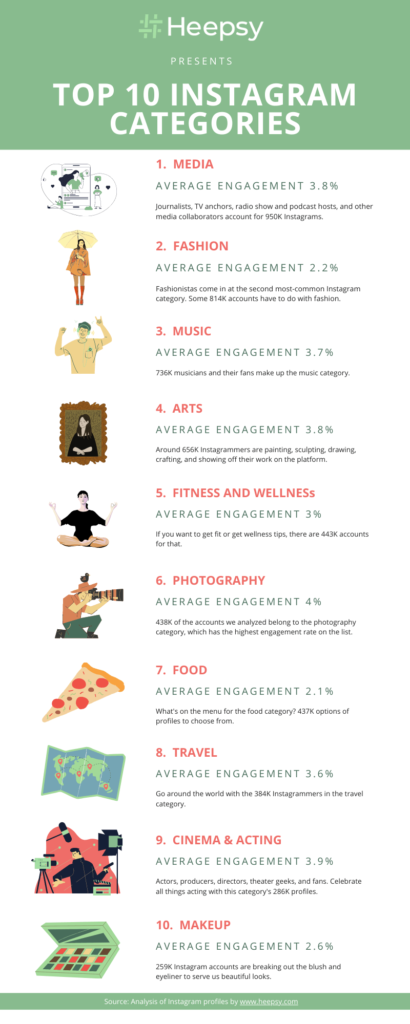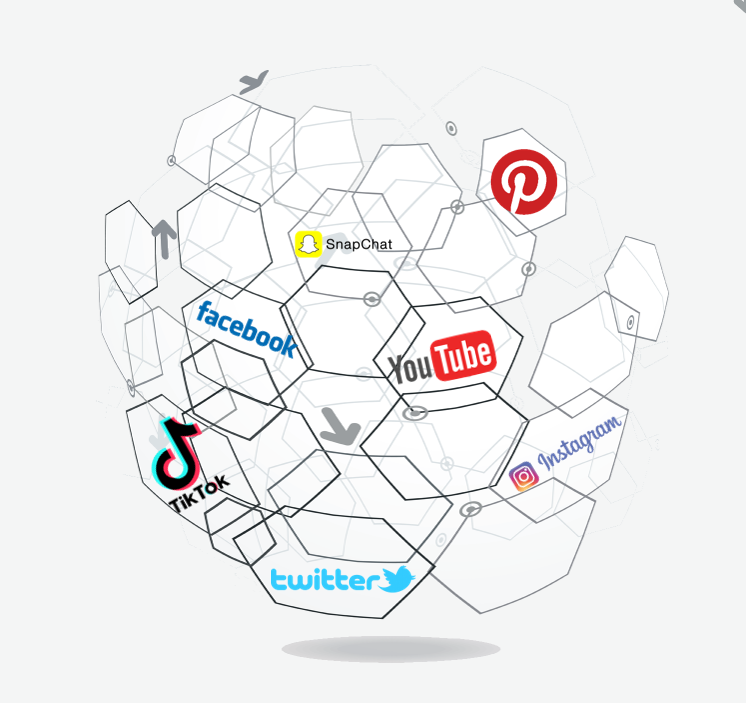With cookies going away, ad blocking becoming popular, and regulations concerning how personal data can be used on the rise, brands are scrambling for ways to reach their target consumers. Many brands are turning to social media influencers. Fashion journalist Emily Farra (@emilyfarra) believes influencers are “the retailers of the 2020s.”[1] This begs the question: Do influencers really influence? Journalist Kevin Roose (@kevinroose) asserts, “As social media expands its cultural dominance, the people who can steer the online conversation will have an upper hand.”[2] Conversely, Kevin Kelly (@kevin2kelly), founding Executive Editor of Wired magazine, tweeted, “So-called influencers don’t influence. According to a 2007 paper by Duncan Watts, ‘large scale changes in public opinion are not driven by highly influential people who influence everyone else, but rather by easily influenced people, influencing other easily influenced people.” Can these opposing positions be reconciled?
Brands are not trying to drive “large scale changes in public opinion”; rather, they are trying to reach targeted audiences and inform them about the products they offer. The influencer movement is a step up the trust chain, which begins with friends and family. Morgan Buell (@Morgan_buell), Director of Strategic Partnerships at SheSpeaks, Inc., explains, “With the natural trust and authenticity in our personal relationships, it is no surprise that a Nielsen study found 83% of people agree recommendations from friends and family are the most credible form of advertising, solidifying word-of-mouth marketing as the number one vehicle for brands to reach consumers.”[3] It’s no secret that more and more people are spending time with social media. This means for brands, especially those looking for younger target audiences, influencers offer a great opportunity. Farra insists, “Moving product and driving sales have become an influencer’s most valuable skills.”
Social Media Opportunities
When considering using social media influencers, brands need to take a number of factors into consideration. The size of an influencer’s fan base is certainly one of those factors. However, there are other considerations, such as, what platforms they are on, do they genuinely believe in the products you are offering or are they just selling out? Buell offers four suggestions for engaging influencers. First, “target influencers across platforms.” This is important, she writes, because “Facebook, Instagram, Pinterest, Twitter, Snapchat, etc., all vary in user-experience and demographic target.” Since she wrote her article, TikTok has also become a social media sensation.[4] Second, “allow the influencer to craft the message.” Allowing them to tell the story their way maintains their authentic and trusted voice and adds the personal touch that made them influencers in the first place. Third, “amplify the content in social for earned media.” Buell explains, “Influencers promote the content across earned channels, as well as encourage their audience to do the same. Tagging the content with custom hashtags can provide trackable results. The evergreen nature of the content allows it to be promoted in social for as long as the brand wishes.” Finally, “leverage influencer photos and content in targeted social posts and paid media.” In fact, photos and videos are sine qua non of social media influencer marketing.
To demonstrate how important visual media is, let me share some data provided to me by Heepsy employee Sonia Arana. She told me the company had analyzed around 10 million Instagram influencers to find which categories were the most popular. The company then calculated the average engagement rate for the profiles that belong to those categories. The leading category by sheer number of accounts is Media. But the top 10 category with the highest overall engagement rate was photography, with a 4% average. As you ponder the infographic Arana provided me, you should be struck by how many of the top ten categories are visual media heavy.

Roose concludes, “In the business world, influencer culture is already an established force. A generation of direct-to-consumer brands that were built using the tools and tactics of social media has skyrocketed to success.” MarTech journalist Kim Davis (@KimDavis_) insists, “Influencers aren’t going away.”[4] Influencers, he writes, are “perceived as conveying a brand’s voice with more authenticity than advertising.” It should come as no surprise that in the Digital Age, big data can be used to help brands identify promising influencers. As Davis notes, “It’s almost too obvious to say that finding the right influencers is both difficult and essential. What is less obvious is that the science of identifying and driving maximum impact from influencers has made big strides over the last couple of years. Like most other business initiatives, the influencer space is now data-driven, or, at least, it should be. … The good news is that there are platforms that help with the heavy lifting when it comes to influencer data.”
Social Media Dangers
Hayley Truncali, social media manager at MediaPost, writes, “No doubt there’s a wariness among consumers about influencers. Over the years, this type of social activity has bred cynicism among the public.”[6] As noted above, influencers can be seen has “selling out” if their voice is not authentic and the products they endorse are either of little interest to their fanbase or of poor quality. Brands have also been burnt when an influencer proves to be out of harmony with a brand’s message and/or a brand’s values. The platforms on which influencers interact can also be problematic. Back in 2014, AdAge published an article with the headline: “Facebook is for Republicans; Twitter is for Democrats.”[7] In today’s divisive political climate, association with political movements can be disastrous.
The use of social media channels can also be perceived as exploitive or harmful. A recent article in the Wall Street Journal related the story of a young girl who “had developed an eating disorder, and had a clear idea of what led to it: her time on Instagram.”[8] The article notes, “For the past three years, Facebook has been conducting studies into how its photo-sharing app affects its millions of young users. Repeatedly, the company’s researchers found that Instagram is harmful for a sizable percentage of them, most notably teenage girls.” With so much scrutiny of social media taking place, brands need to be extremely careful about their social media campaigns. They can come across as insensitive or exclusive if their social media campaigns are handled incorrectly.
That said, the pandemic has made social media a “must have” for any marketing campaign. Ismael El-Qudsi (@elqudsi), CEO and co-founder of SocialPubli.com, explains, “If COVID-19 has taught us one thing, it’s that every business needs a digital presence. The pandemic has resulted in an influx of businesses to the digital space, many of them moving online for the first time. … Along with their digital presence, organizations have turned to social media to generate awareness and interest in their products and services.”[9] He adds, “When a crisis strikes, people often have different needs. Audiences who were previously focused on convenience may become more price-driven. Different demographics face different and new challenges. … Influencer marketing can be instrumental in helping you to show up authentically. Use their feedback both to craft their campaigns and to adjust your overarching messaging as needed.”
Concluding Thoughts
If you find the right influencer with the right audience, social media marketing can be very effective. Hester Bates (@HesterBates18), Head of Brand Strategy at Influencer, explains, “Influencer marketing is able to generate leads that have a higher chance of becoming customers. This is because creators are able to reach a hyper targeted, highly engaged audience that already has an interest in the kinds of products that the brand is promoting.”[10] As noted above, there must be an authentic connection between influencers and brands for campaigns to work. Bates concludes, “Creators are great at building genuine relationships with their audience, and this enables them to gain deep insights. When consumers engage with creators — via polls, stories or post analytics — it allows both the creator and brand to understand their likes and dislikes, and generally how engaged and valuable they are. Because of this, a brand can be sure that they are pushing a product or offering to a genuinely interested consumer and therefore have confidence in generating leads that will convert.”
Footnotes
[1] Emily Farra, “Influencers Are the Retailers of the 2020s,” Vogue, 19 October 2020.
[2] Kevin Roose, “Don’t Scoff at Influencers. They’re Taking Over the World.” The New York Times, 16 July 2019.
[3] Morgan Buell, “Influencers Win For Brands In The Ad-Blocking Economy,” Marketing: CPG, 9 May 2016.
[4] Hayley Truncali, “TikTok Now Influencing Influencer Marketing,” The Marketing Insider, 29 April 2021.
[5] Kim Davis, “The science of using influencers made simpler by data,” PR Week, 5 June 2020.
[6] Truncali, op. cit.
[7] Ana Radelat, “Facebook is for Republicans; Twitter is for Democrats,” AdAge, 30 October 2014.
[8] Georgia Wells, Jeff Horwitz and Deepa Seetharaman, “Facebook Knows Instagram Is Toxic for Teen Girls, Company Documents Show,” The Wall Street Journal, 14 September 2021.
[9] Ismael El-Qudsi, “Five Benefits of Influencer Marketing for Recession-Proofing Your Brand,” MarketingProfs, 17 February 2021.
[10] Hester Bates, “Why do influencer marketing campaigns produce high-quality consumers?” The Drum, 8 April 2021.





